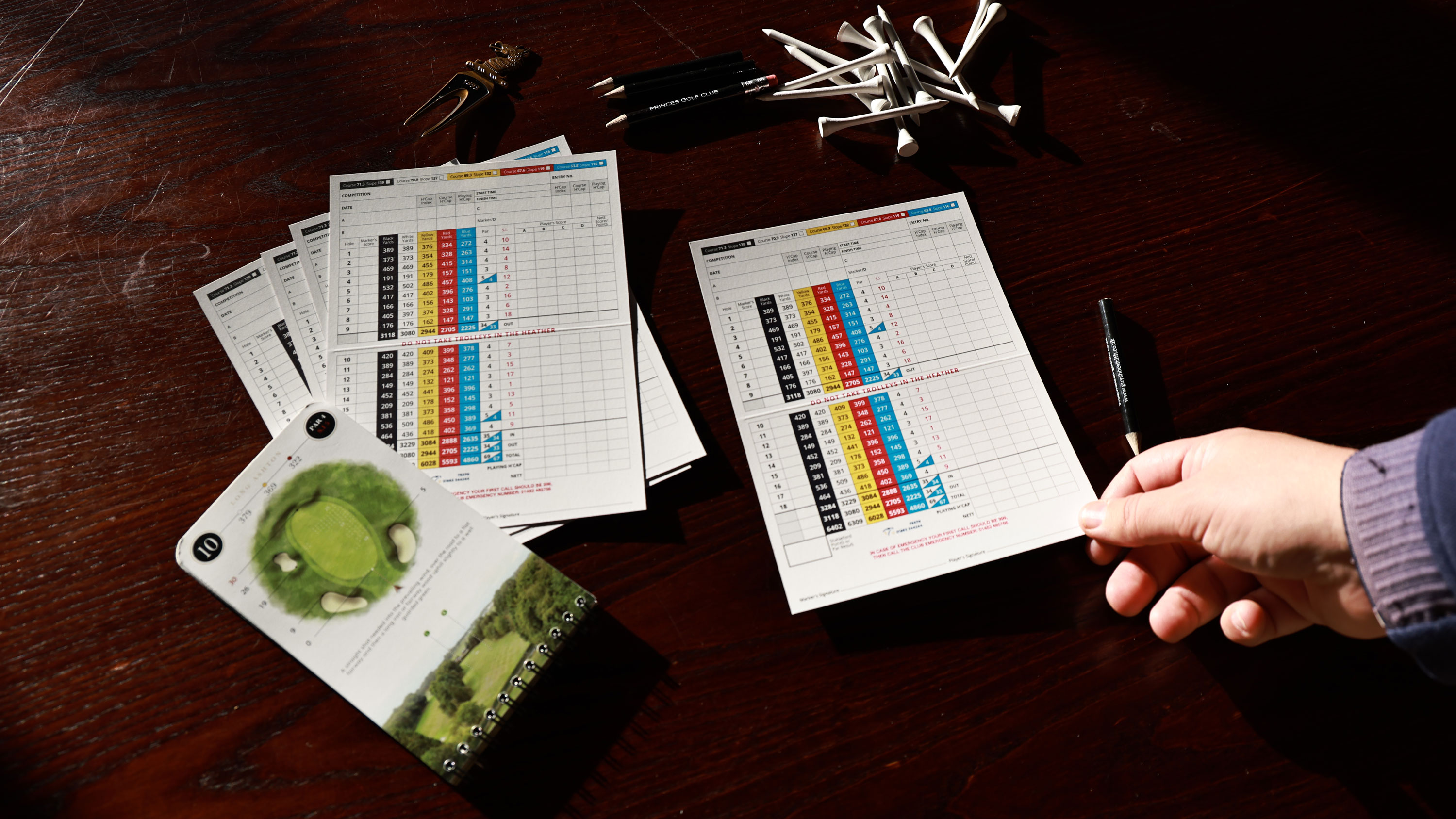Everything You Need To Know About Golf's World Handicap System
We explain all the key details of the World Handicap System, which came into effect in 2020 and replaced the old CONGU system


Developed by The R&A and USGA, the World Handicap System (WHS) represents a major shift in handicapping that has united six handicapping bodies across the globe under one standardised system.
WHS allows handicaps to be truly portable and makes for a fairer and more equitable system of accurately calculating a golfer’s current playing ability.
Here we give the lowdown on some of the key things you need to know about the WHS.
Why Was The WHS Adopted?
The principal aim was to make handicapping easier to understand and transferable to any course anywhere in the world.
Handicaps used by 15 million golfers in 80 countries worldwide should now be equitable.
The system also aims to make it easier for players to obtain and maintain a handicap and to enjoy a level playing field, wherever they play, whether in recreational games or in competition. The objective is to grow the game.
How do I get a handicap?
You can obtain a WHS handicap as a member of an affiliated golf club or by joining England Golf's iGolf or Scottish Golf's OpenPlay schemes designed to allow nomadic golfers to obtain a handicap.
Subscribe to the Golf Monthly newsletter to stay up to date with all the latest tour news, equipment news, reviews, head-to-heads and buyer’s guides from our team of experienced experts.
WHS software provides a Handicap Index by calculating the average of the best eight scores from your last 20 rounds.
If you are new to golf or don’t have a handicap at this stage, you will need to submit scorecards amounting to 54 holes. From those an initial Handicap Index will be provided. This will be altered when more scores have been submitted to deliver a fully developed Handicap Index.
What is A Handicap Index?
This is the key number in WHS. It’s calculated from an average of the best eight of your last 20 returned scores.
When a new score is submitted, the Handicap Index is automatically recalculated and updated at the end of the day’s play, ready for use the following day. The maximum handicap index is 54.
There will be caps in place – soft and hard based on a player’s lowest Handicap Index in a one-year period. If a player’s handicap goes three shots above the low index, further rises are reduced by 50% (soft cap.) If a player’s handicap moves 5.0 strokes above the low index in a 12-month period, it cannot rise any further (Hard cap).
How is Course Rating Calculated?
Two calculations are made – Course Rating and Bogey Rating.
Course Rating is an evaluation of course difficulty for a scratch golfer (someone with a Course Handicap of 0). Bogey Rating measures playing difficulty for a bogey golfer (someone with a handicap of 20-24).
Having these two ratings allows WHS to produce a Slope Rating for each set of tees which allows all golfers to work out how many strokes they will receive on a particular course – Course Handicap. At a course where all players compete from their Handicap Index, Slope Rating is 113.
How is Slope Rating Calculated?
Slope Rating is calculated by subtracting the Course Rating from the Bogey Rating and multiplying it by a predetermined constant. Slope ratings vary between 55 and 155. The Slope Rating is not purely an indication of a course’s difficulty, it is an indication of the difference in difficulty for scratch and bogey players.
How Is Course Handicap Calculated?
Every club should have clear signage displaying Course and Slope Rating for every set of tees. A player will then cross reference their Handicap Index with the table to find what their Course Handicap will be. They then go out and play to that number.
The Course Handicap equation is Handicap Index x (Slope/113) + (Course Rating – par). So, if par is lower than Course Rating, you’ll get more shots on your Course Handicap, and vice versa.
Handicap Allowances Under WHS
Handicap allowances are intended to provide equity between players of all abilities when they are competing over nine or 18 holes in all formats of play. Different handicap allowances are suitable for different formats.
Handicap allowances are applied to a Course Handicap to establish a player’s Playing Handicap for the event.
What Is A General Play Score?
General Play scores are recreational rounds that count for handicap. In England, you have to to pre-register your round as a General Play counting round teeing off if. If you haven’t pre-registered, a score cannot be submitted.
A singles competition score or pre-registered General Play score from a course and tee that has a Course and Slope Rating for your gender, played to singles medal, Stableford, Par/Bogey format can be submitted for handicap. Counting scores must be completed with at least one other person.
What is the Playing Conditions Calculation?
WHS includes a “Playing Conditions Calculation” that looks at how all players who have entered a score on a course have performed on that day, compared to their expected performance.
At the end of each day’s play a Playing Conditions Calculation will be made by the system. This was altered in 2024 in response to concerns that the PCC wasn't representative of conditions faced.
Can I put in a card for nine holes?
Yes, you can, and for any number of holes between nine and 18. The 'expected score' calculation will be used for holes not completed, which is personal to each player. This came into effect in 2024.
Where can I find out more about WHS?
You can find further details at the England Golf website. The websites of Scottish Golf and Wales Golf also contain useful information and guidance.

Fergus is Golf Monthly's resident expert on the history of the game and has written extensively on that subject. He has also worked with Golf Monthly to produce a podcast series. Called 18 Majors: The Golf History Show it offers new and in-depth perspectives on some of the most important moments in golf's long history. You can find all the details about it here.
He is a golf obsessive and 1-handicapper. Growing up in the North East of Scotland, golf runs through his veins and his passion for the sport was bolstered during his time at St Andrews university studying history. He went on to earn a post graduate diploma from the London School of Journalism. Fergus has worked for Golf Monthly since 2004 and has written two books on the game; "Great Golf Debates" together with Jezz Ellwood of Golf Monthly and the history section of "The Ultimate Golf Book" together with Neil Tappin , also of Golf Monthly.
Fergus once shanked a ball from just over Granny Clark's Wynd on the 18th of the Old Course that struck the St Andrews Golf Club and rebounded into the Valley of Sin, from where he saved par. Who says there's no golfing god?
You must confirm your public display name before commenting
Please logout and then login again, you will then be prompted to enter your display name.